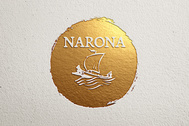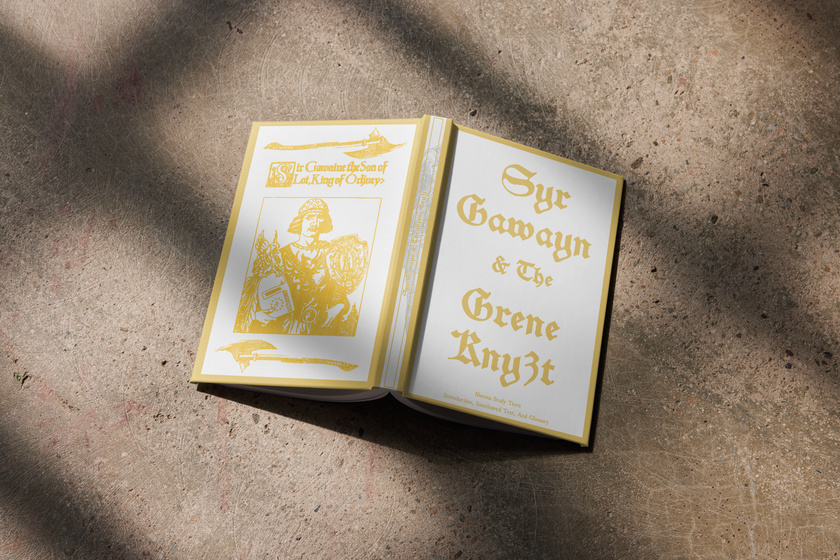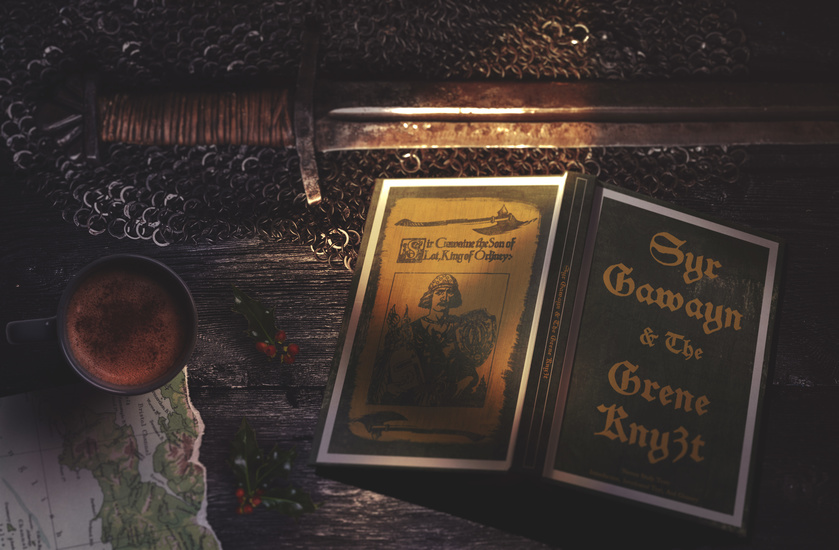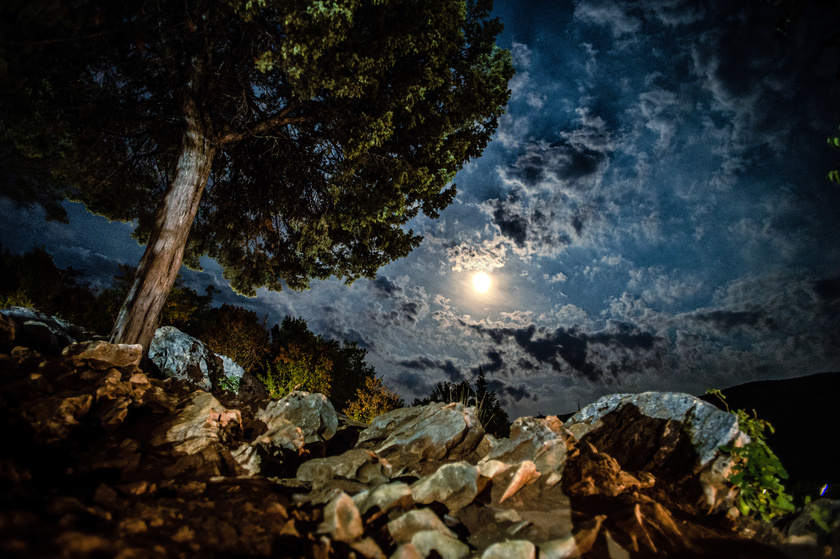
It's here!
The chivalrous classic of Christmas, magic, and beheading in the original language: Sir Gawain And The Green Knight.
But where does the text come from and why is it so often missing from the rest of the Arthurian Canon?
Like most early English literature the origins of the Gawain text are a mystery. It, like Beowulf, appears first in the personal library of Sir Robert Cotton and the text was added some time before 1607.
At its first republishing in 1839 the text was already 400 years old.
Written around 1400, we know nothing about the text's first 200 years. The second 200 years it spent completely forgotten, even being overlooked by the compilers of the Cotton library in both 1696 and 1802.
The author is anonymous but the term is misleading. How can so many early English texts have no known authorship or exist in only one manuscript?
The answer is the Act of Supremacy in 1536.
Monastic libraries, being disassembled and destroyed for the crown's enrichment, are the only logical source that could have provided the flood of early English manuscripts that begin circulating among private collectors in England in the 16th century.
Yet what Henry VIII, Thomas Cromwell, and the Ashburnham House fire in 1739 nearly deprived us of lives on here.
Sir Gawain and the Green Knight is an ambitious poem, both alliterative and lyric, that sets out to correct the errors of courtly love.
Rather than focusing on Gawain's exploits in the field of battle, the Gawain poet shows him encountering the dangers of courtly life.
Gawain, true always in his word, is beset on all sides by conflicting oaths and loyalties in the court of the mysterious Bertilak.
Gawain's physical foes are easy to deal with, being assaulted by adultery, deception, and oath breaking is his real test.
It's a tale of Christmas jests, courtly games, and real danger. The Green Knight lived after Gawain beheaded him - what will Gawain do when it's his turn to receive the axe?
Included in this edition are the original Middle English text as well as two glossaries and notes to assist with reading. There's also a scholarly introduction to the work to provide the context and history of Sir Gawain and the Green Knight
Pick up a copy and learn more!
https://www.amazon.com/dp/B0BW363S8Q
2 musicians, 4 covers, 1 year, spread across Seattle, Split, and Maui
Check out the full playlist here!
https://bit.ly/mislavandannieseason1
Changes - new name, new logo, and new content. We'll be posting every Monday and Wednesday. Look for new content here and on YouTube! Join to contribute!
Our name comes from an old inspiration, the ancient river town of Narona. Here the Roman town sits quietly under the surface but the past. Like roots of a tree, it brings to the surface remnants of ages long forgotten. Fragments of Illyria, Greece, Egypt, Rome, and ancient Croatia rise unexpectedly after a rain storm or from under a plow.
Meanwhile our logo is a boatman who traversed the river Narona, which gave the town its name. Innumerable others have navigated it, sailing from deep in the mountains to the Adriatic then on to Constantinople, Rome, Alexandria, and beyond. Now named Neretva, the river hosts rowing contests to this day.
It reminds us that we're but pilgrims in our time - our goal is to create films, photography, and media content to adorn the journey, drawing from the wisdom of those who've gone before. We want our ...

















